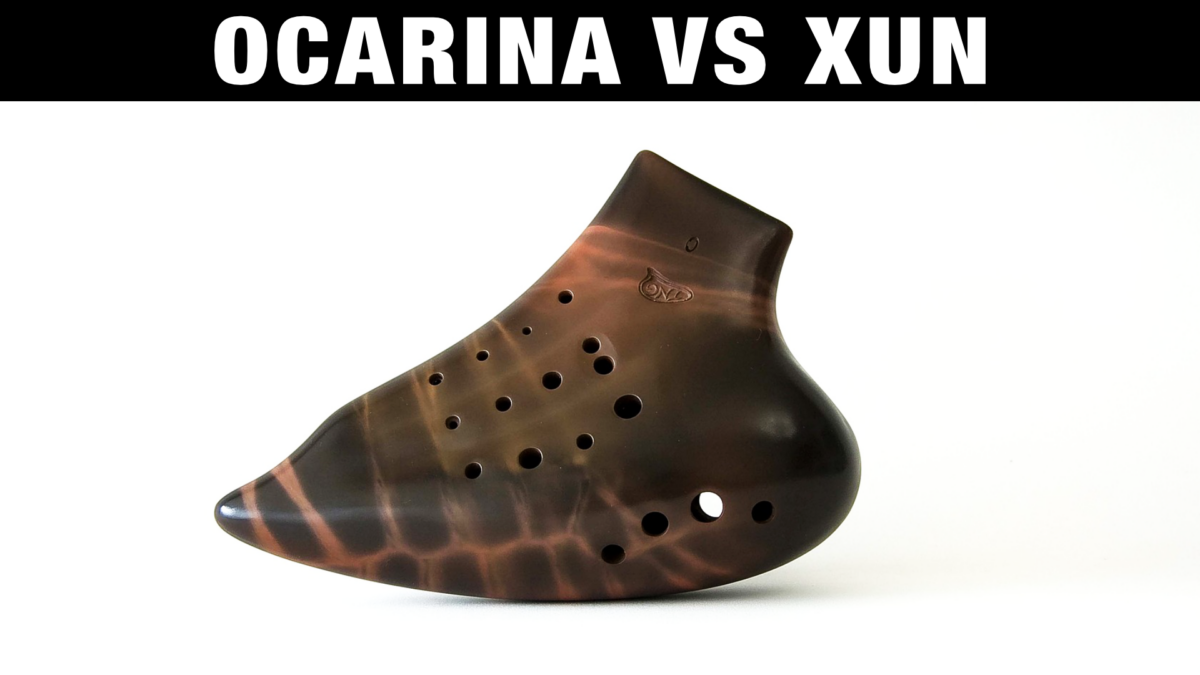 These instrument are similar, and often the xun is mistaken for an ocarina, since the ocarina has spread out more in the world (especially after the classic Zelda video game: ocarina of time”.
These instrument are similar, and often the xun is mistaken for an ocarina, since the ocarina has spread out more in the world (especially after the classic Zelda video game: ocarina of time”.
However, there are unique differences both in how you play them, and the tone and sound. Let’s explore them here:
1 – The Design
The ocarina is most often shaped like a shell, held and played horizontally with a windway (mouthpiece) that sticks out. The xun is shaped like an agg and played vertically (like a standing egg), and has no mouthpiece. Instead you play it by blowing air over the hole, like blowing a bottle.
2 – The Sound
The design of the xun makes this instrument very deep compared to the same size ocarina, but also very soft and weak in volume (which may be why it has not become as popular).
3 – The Range
The ocarina comes in many variations (soprano, alto, tenor, bass), and they usually have at least 1,5 octave of range, some even more than 2.
Since the xun has a closed end wind design, it has a very limited range (basically a 1 octave range).
4 – The Expression
The xun with its flute-like tone hole requires the player to create a nice embouchure in order to play it, compared to the fipple-like design of the ocarina. The upside of the xun method of playing is an increased expressive range for tone shaping and dynamics.
5 – The History
The xun actually predates the ocarina, as it is one of the oldest instruments from China, going back around 7000 years ago. The ocarina on the other hand, even though it shares the same ancestor as the xun (vessel flutes), the modern version of it (including its name) was invented in Europe (Italy) in the 1800’s.

